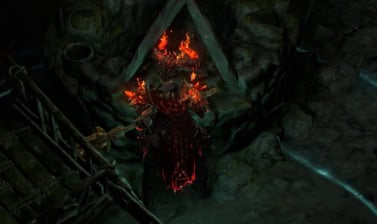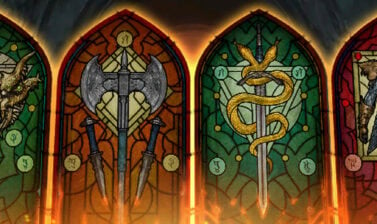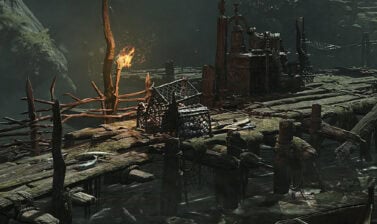Whether you’re new to the game, just starting a season, or leveling an additional character, this guide will help kickstart your progress in Diablo IV and teach you how to level up fast, efficiently, and quickly get to the endgame!
This guide is updated for Diablo IV Season 6 and Patch 2.0.
Check our Diablo IV Builds List of uniquely crafted builds for each class.
Purpose of leveling up fast
The short and simple answer is to get stronger to take on the endgame as soon as possible. The game is a lot more fun when we’re able to get a build set up and never have to worry about replacing gear until we get perfect upgrades.
For most people, the early game can feel like a slog. Everything will be a little slower at the start of the season. But we’ll break down this process to much more streamlined goals to quickly progress up to Level 60 and higher paragon Levels
This guide is also written from a Solo Player Perspective. This means it’s possible to follow this guide without playing co-op or having to buy gear at any point from other players.
There are ways you can have a friend level you up way faster (especially past the start of a season), but that’s not what this guide is about.
Tips and Tricks for Leveling in Diablo 4
Before we get into the process itself, we’d like to highlight a few things to keep in mind while leveling. These will help speed up the process a fair bit. Once Hitting Level 60, these will still apply to gaining Paragon Levels as well.
Difficulty Selection
While it’s easy enough to just suggest playing on Penitent and only Penitent until Level 60, that may not be the best experience for everyone. This is why you need to Pick a difficulty that is comfortable to you.
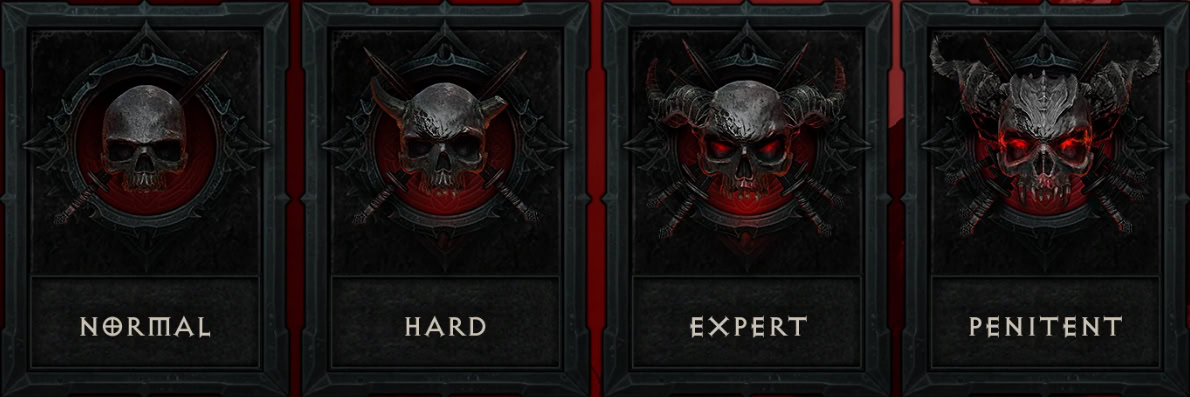
While a higher Difficulty means more XP, if you’re dying or defeating enemies too slowly, it will hinder the speed at which you level. We recommend Expert Difficulty for those newer to Diablo, while Penitent is better for more experienced players.
Consumables
Consumables are crucial! Not only are they the only permanently available XP boosts you can get, but they’re also exceptionally easy to find and cheap to craft. Below is a quick table of what to expect.
| Level | Unlock | Maximum bonus XP |
|---|---|---|
| 20 | Tier 1 Elixirs | x5% XP |
| 45 | Tier 1 Incense | x10% XP |
| 50 | Tier 2 Elixirs | x13% XP |
| 60 | All Consumables | x13% |
| 10 | Seasonal Consumables* | x15%** |
** This XP Bonus will stack with the bonuses of other consumables, unless stated otherwise
You’ll often find more than enough Elixirs just by defeating Elite mobs. We recommend using the Elixir of Resourcefulness once available, as it grants bonus Resources and reduces Resource costs for skills.
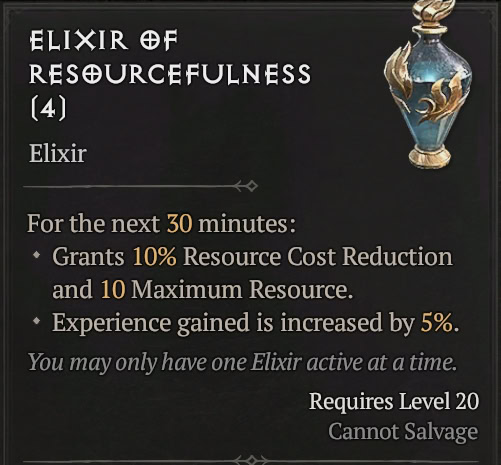
Incenses need to be crafted, and we’ll be able to use up to two of them at a time once we get tier 2 versions of them.
Sadly only their effects stack and not the XP Bonus, making it easier to deal more damage or survive better but not increasing XP gains directly.
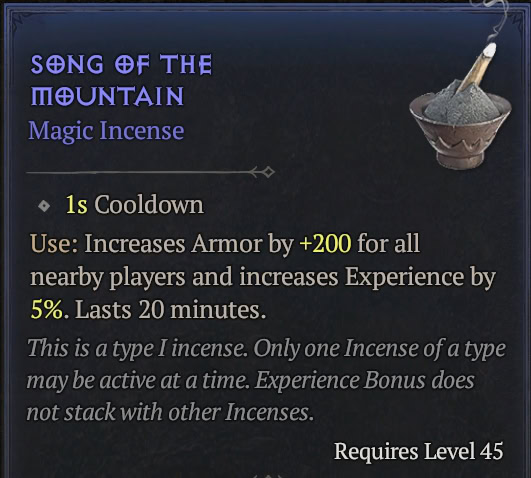
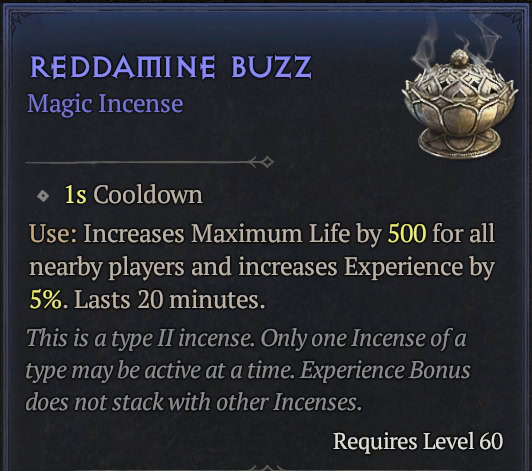
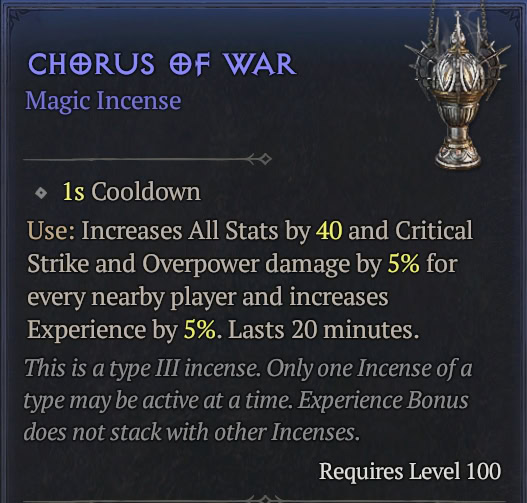
Clearing Dungeons
While this is more relevant to the later stages of the leveling process it’s better to cover it early. This way you will be aware of a few things to remember here as well.
Don’t waste too much time trying to fully clear a dungeon! Unless a dungeon objective specifically asks you to, don’t fully clear it. The time spent trying to finish off one stray mob is time that could be spent progressing the dungeon to the next pack!
Only run dungeons early on if they give an Aspect that is crucial for our desired build to function. Things like Recharging Aspect for Chain Lightning and the Aspect of Encircling Blades for Flurry. The ones that make the skill itself more viable or resource-stable in general.
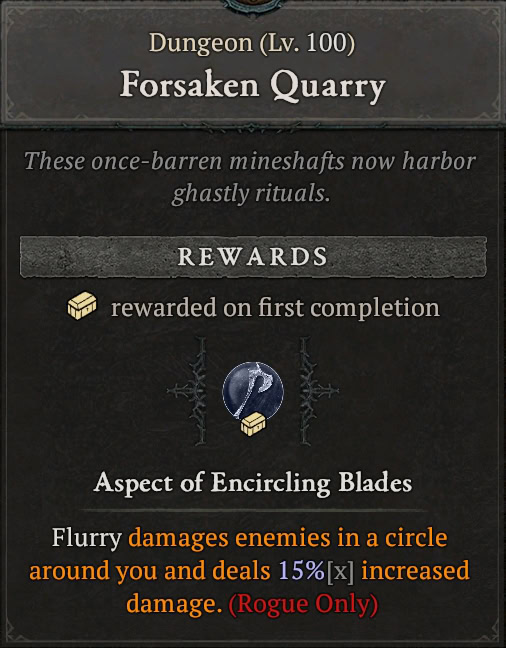
One last reason to consider running a Dungeon, or even Nightmare Dungeon periodically while leveling is the Experience Wells added with Season 6. These grant another x15% Experience bonus that lasts a full two hours. So dipping into a dungeon to try and find one is worth it if you’re trying to get as much EXP as possible.
Obol Vendor
With its changes in Seasons 5 and 6, the Obol Vendor is a great way to get basic version of “Core Uniques”, or Unique Items that enable a build to be as strong as possible.
The Purveyor of Curiosities, commonly called the Obol Vendor, is available in every major city of Sanctuary. You can find them by locating the icon that looks like a sack with a question mark on it.
It’s very RNG to get what we want or need, but there are a couple of important times to consider using them.
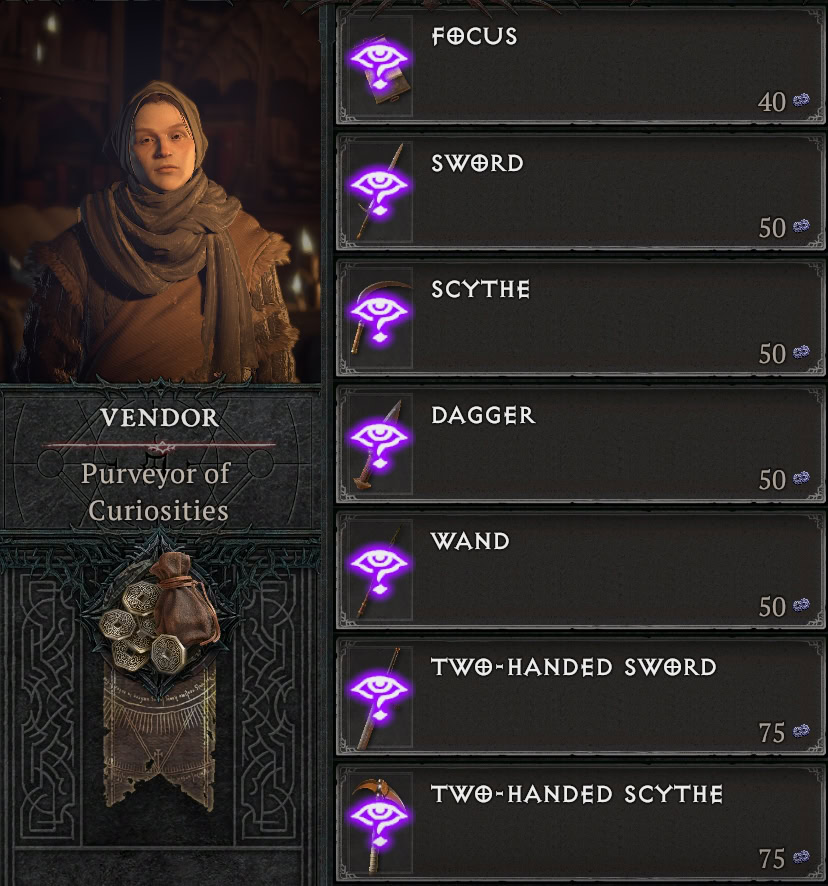
The first is using them to get early Legendary items. While the odds are fairly low, starting around Level 20 they can provide Legendary items. This makes them useful for filling out slots that happen to be missing Legendary items.
This will be faster than trying to farm the monsters to start. We’ll just aim for a Legendary for each slot, which comes with an overall defensive boost.
The second is to hunt down certain Affixes that cannot be gotten from dungeons, or that you simply want to target farm. What Affixes appear on certain items is based on their type. Here’s a quick table for reference.
Item Slot
Aspects
Available Categories
Boots
Mobility and Utility
Helm
Defensive and Utility
Chest
Defensive and Utility
Legs
Defensive and Utility
Gloves
Offensive and Utility
Weapon
Offensive
Rings
Offensive and Resource
Amulet
All Types
Finally, at Level 60, you can use the Obol Vendor to try and get some Ancestral gear, or Core Uniques as mentioned previously. The Ancestral rate is still very low, but it’s quite easy to get those Core Uniques, to help get a build online and going strong.
Time-Limited Bonuses
While not guaranteed to be available every season, every season so far has included a bonus to XP gained from monsters, and occasionally other sources.
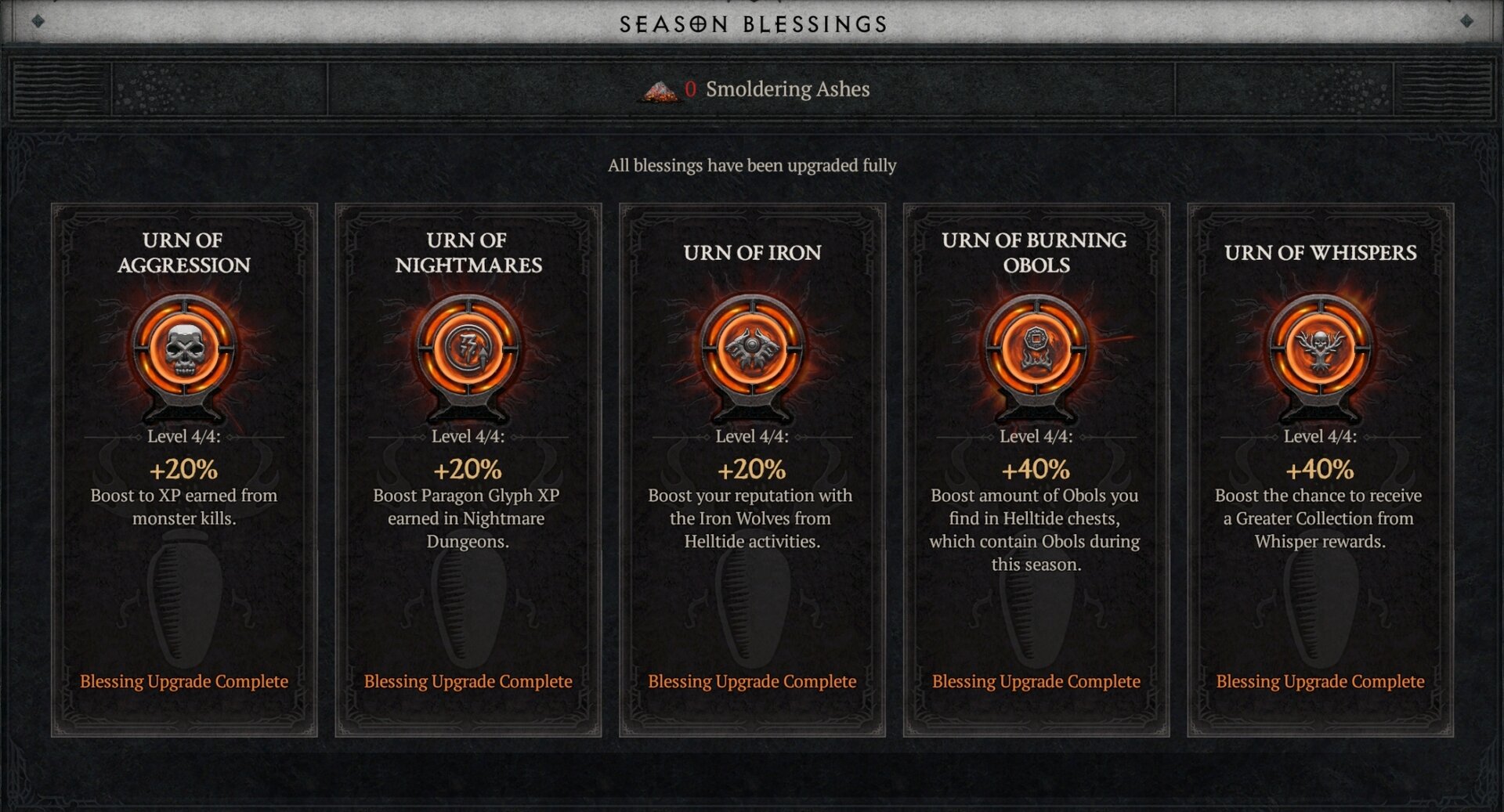
These often cap out around 20%, but it’s still more XP to get and one of the main reasons to level quickly.
For more information on Seasons and how to earn these Season Blessings, check out our Diablo 4 Seasons Guide.
In addition to this, there may be events that grant the Mother’s Blessing bonus. This bonus is often an additional 25% increased XP and 30% or higher Increased Gold. These will often come alongside other seasonal events, which may or may not have bonuses for leveling.
How to Level Fast: the steps for each stage
We’ll break down our preferred Leveling process into stages, or goals. From our testing, this has been the quickest way to level, usually reaching level 60 in around 4 hours in a pure solo setting, varying a bit from class to class.
The Early Game
The early game covers everything up to Levels 20-30. Our main goal for this stage is simply to gain levels, find our Tempering Manuals, and get our build going.
Dungeons
First, we’ll want to get any useful Aspects that we can get from dungeons to use them as soon as possible. At most, this will be one, maybe two aspects. Our leveling will be fast enough that any more will slow us down.
If we’re lucky, the process of running these dungeons will also get us our early Tempering Manuals to use once we get Rare and Legendary gear later.
Helltides
After we get those aspects, then it’s straight into Helltides. With these available from Level 1 starting with Season 4, it’s far and away the best XP you can get this early on. High Density of mobs, plus the XP from opening Tortured Gifts make for a quick leveling and gearing process.
Add in the Whisper Caches on top of that and it’s a one-stop shop for the early game. We’ll end up getting our remaining aspects, and be able to consistently upgrade our
We have a full guide on Helltides and the most efficient ways to farm them. We use the same methods while leveling, as they’re equally as good for the same reasons.
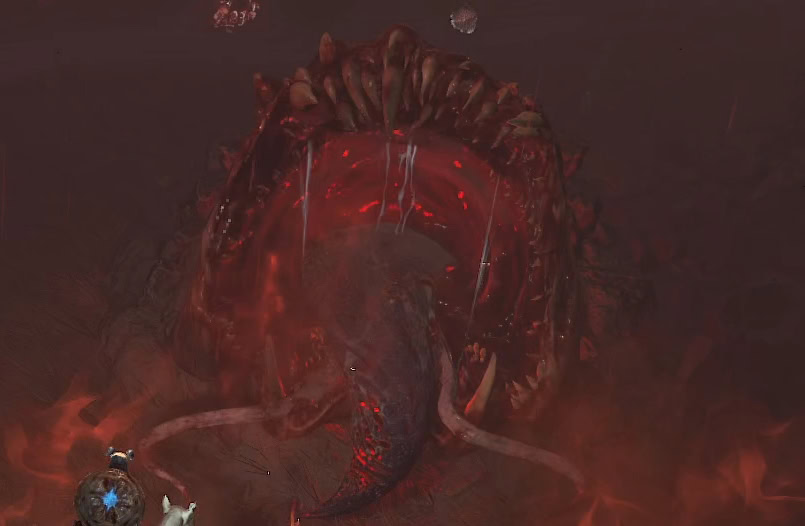
Once we hit Level 20 or so, we’ll want to work on getting a build going with Legendary items now dropping regularly. Once we have a build setup with a few good Offensive and Defensive Aspects as well as a couple of good Tempered Affixes, we can also consider raising the difficulty to Penitent if we didn’t start there.
For more information on Tempered Affixes, check out our Tempering Guide. This also covers the best way to make use of these affixes while leveling.
The Mid-Late Game
From here on out, our Goal is Level 60, but it’s certainly not the last stop in our Leveling Journey. We’ll still have gear and Paragon to tackle afterward.
Kurast Undercity
Added as part of the Vessel of Hatred Expansion, the Kurast Undercity is a great way to get quick levels. While doing other content, we may come across a Tribute of Growth, which allows the Undercity to grant bonus Experience.
Even without this special Tribute, it’s still a great XP option that can be run back to back and drop a good amount of gear just like Helltides, but only if we successfully clear.
The rate is almost comparable to Helltides, getting upwards of 40% of a level per run. With Tier 1 Elixirs and Incense up, even a run on Normal earns up to 60% of a level to 60. The only downside to it is the reduced amount of gear that is earned compared to Helltides. If you happen to have a Tribute of Growth, it adds between another 10-20% to most runs.
Once we hit 60 and get into Torment Difficulties, other Tributes can help us farm gear to push our power even further. We recommend not running the Kurast Undercity without a Tribute, with their loot only being at the end, you’ll slow your ability to get meaningful upgrades, especially Paragon Glyphs.
If you want to learn more about this dungeon, we have a Kurast Undercity Guide that explains all the mechanics and how best to make use of it outside of leveling.
Strongholds
One of the quickest options to finish off the last level 20 or so levels will generally be Strongholds, scaled to our level. If we’re confident enough in our current power, Helltides will be a faster option.
With the changes to Stronghold XP in Season 6, these are incredibly worthwhile to run, even solo. Each completed Stronghold will grant more than a full level’s worth of XP the first time it’s cleared. Since we’re relying on the first-time clear bonus, this means we can just plow through them on Normal and have it be a super fast way to finish off our leveling.
The Endgame
So we’re at Level 60, what’s next? Now we move towards optimizing for Paragon Levels. All previous tips for getting to Level 60 still apply here in terms of gaining XP, we’re just gaining Paragon levels instead of Character Levels.
The Pit of the Artificer
Alongside Parargons Levels, we can look to run The Pit and start climbing Tiers to make our way towards the Torment Difficulties where the final bit of character power becomes available to us. Glyphs will also drop in the Pit if you want to jump in and start pushing Pit Tiers as soon as possible.
We’ll need to run the Pit regardless at this point, as it’s now our way to upgrade Paragon Glyphs as well.
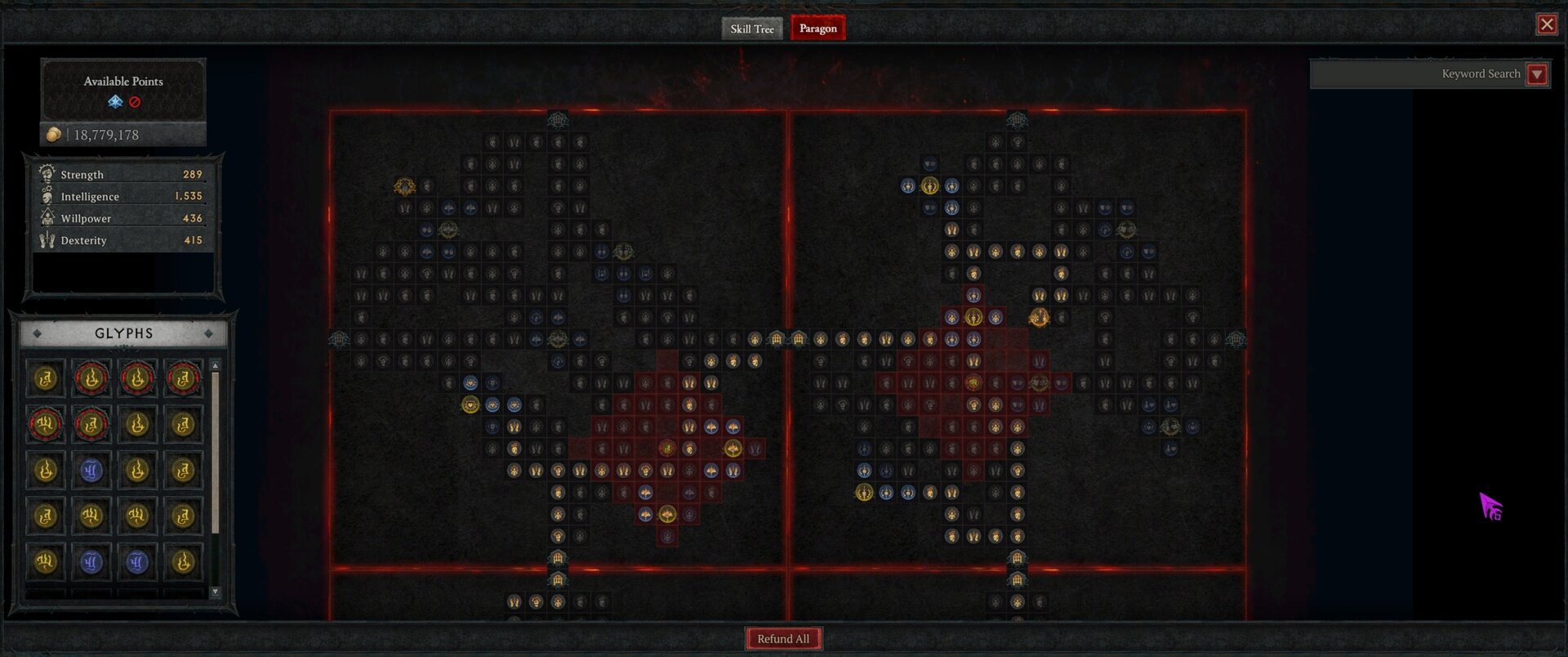
The Pit is especially important because it’s how we unlock Torment Tiers, and we’ll want to get access to Torment 1 and Torment 2 as soon as we can as this opens more character progression.
Infernal Hordes
If we’re farming Helltides, we’ll likely drop a lot of Infernal Horde Compasses allowing us to access Infernal Hordes. Added in Season 5, Infernal Hordes are one of the best EXP options in the game. It’s a shame we can’t use them to reach 60 sooner anymore, but they’re an excellent way to jumpstart your Paragon Levels.
As of Season 6, these are only available starting in Torment Difficulties. While this slows our initial leveling, it’s great for our Paragon Levels and getting Ancestrals to boost our characters well into being Torment Difficulties.
Hordes will rarely drop Aspects or Uniques outside of those with increased drop rates there, so we’ll need our gear in order before we start farming them.
For more information on Infernal Hordes, check out our Infernal Hordes Guide. This goes over the content in detail and the best ways to get the most out of it.
Nightmare Dungeons
With Glyph XP being moved to The Pit, Nightmare Dungeons now fill the role of granting us Masterworking Materials. While we could run Nightmare Dungeons at any point before this, they’re not the best XP we can get.
We will end up getting less overall XP towards Paragon levels in doing this, but we’ll build up Masterworking Materials that we can use to upgrade our gear to make other content easier.
Tormented Bosses
Now that we’re into Torment Difficulties, we’ll want to take down Tormented Bosses. Before this point, we’d only want to fight them if a Unique was a core part of our build. Now they’ll be able to drop more and higher quality loot in general. Mythics can be valuable to any Build, which is the main thing we’re after.
Even if we get a Unique Item we don’t need, we could always trade it to a friend or sell it to other players. We could also just hold it in case we change builds later.
Dark Citadel
With the Vessel of Hatred Expansion, we also have access to the Dark Citadel. This is a PvE Raid-like content with a lot of rewards to earn. This will allow us to earn cosmetics as well as the new Scrolls of Restoration, which are useful for trying to perfect gear and making the grind faster.
Beyond these new additions, it’s preference how and what we want to progress in the Endgame. With all the content available and having some purpose in Torment Difficulties, it’s easier to set goals and chase specific upgrades or progression milestones.
Last but not least, we can do it all over again with a different class or build. We can even prepare Gear and Paragon Glyphs to swap the build for our current character.


